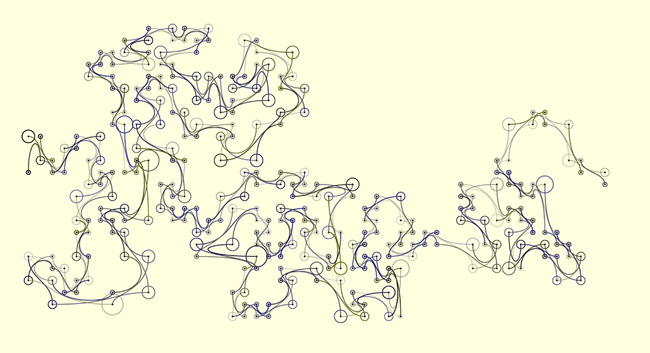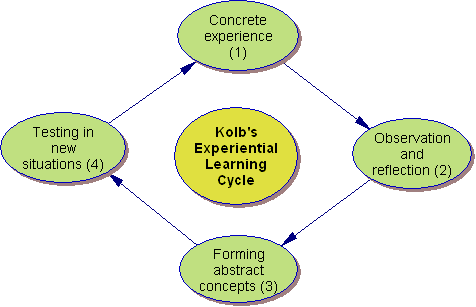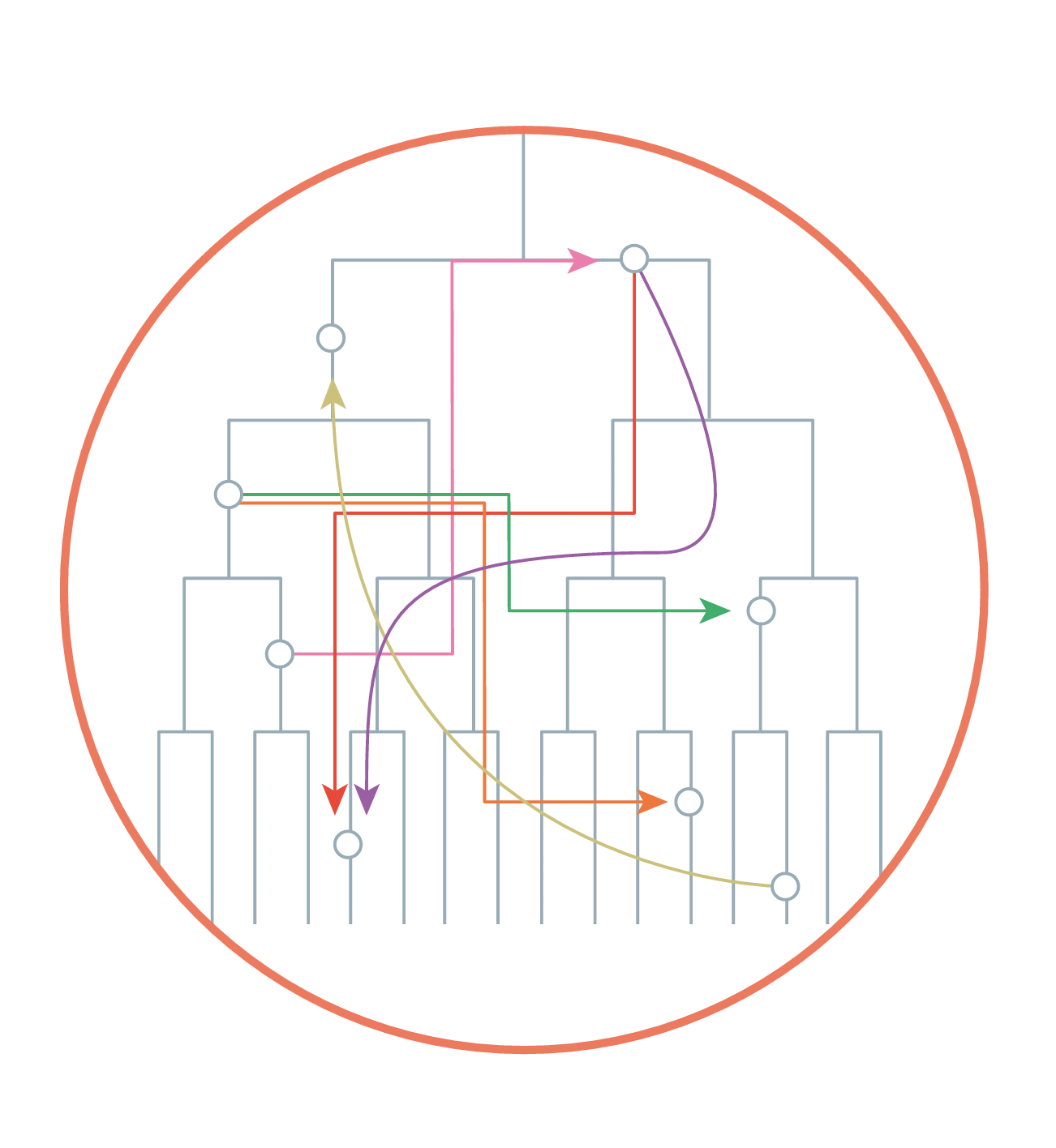
If, as some argue, learning networks are powerful new ways for us to organise and share as learners, then we must consider how we can build and wield them. (Watters, 2015)
This overarching research itself will not focus on educational theory however it is key to outline the relevant theories within the context of studio based practice and where a digital tool could take advantage of the resulting situation and learning experiences in ways that are yet to be realised.
Cognitive Constructivism
This first area is Cognitive Constructivism, this is how are own mental maps or schemas (Piaget, 1936) are constructed and that through our experiences, our learning is defined as a change in the schema. The more we are exposed to new experiences and circumstances the more our schema’s become defined, refined and expanded. A basic example is the introduction of new animals to a child, a child who has encountered a horse, may on first encounter with a cow consider it a type of horse. A child that has already encountered a dog, may on first encounter with a miniature horse conclude it is a dog, the experience of these encounters adjusts the child’s schema.
Teaching means creating situations where structures can be discovered. (Piaget)
Cognitive Constructivism within teaching and learning is often known as experiential learning. The tutor acts as a guide and not as the expert. This type of experiential activity is often facilitated within the KOLB learning cycle, and is often embedded within a curriculum’s project structure to facilitate the experiences and thus create new schema’s and build new knowledge.

Social Constructivism
The theory of Social Constructivism adds the social context to our learning. It is through this social collaboration that students are able to create meaning and connect new knowledge to their current schema. Scaffolding (Bruner, 1960) of curriculum meets the zone of proximity (Vygotsky, 1978) and plays a key role in facilitating advanced experiential learning. Scaffolding within the curriculum embeds the idea of progressing students through a series of interactions to gain more understanding and greater independence of learning, by placing students and tutors within physical close proximity they enhance this defines scaffolding. The focus of Social Constructivism revolves around placing a knowledgeable other at the centre of this process, often the tutor, guiding the learning and managing the social context however the group would all be actively involved in collaborative peer learning.
If your dots are not observable/visible/transparent, then it’s impossible to connect them. (Tullis)
Connectivism
The final theory to be aware of is Connectivism. This is sometimes argued as a reimagining of social constructivism for the digital age, however Siemens states that this is not the case and that it should be considered a new theory. Connnectivism takes the idea of the social network but expands it due to the emergence of the web and that the knowledgeable other is not just the tutor or peers but resources and information located online. A key to note in support of this type of expanded learning activity and how to gain the most from the network is the ability to share and even use a tool outside the confines of an institution.
 Bozarth, J (2014)
Bozarth, J (2014)
Within Art & Design education these theories outlined above collectively underpin many of the studio based activities in which learning occurs. The networked learner takes advantage of the situation where learning occurs not just within the studio but also externally and is a process of many interactions and experiences, it is the learner’s task to bring this together. Technology should enhance this process.
These theories must be understood as underpinning Studio based education and this research will be utilising and be guided by the principles within both for the digital tool and the manifesto. This will thus be distilled into three discreet areas to be considered in the design and making phase.
– Experience
– Context
– Networking.
Chapter Bibliography
- Bozarth, J (2014), Show Your Work, Center for Creative Leadership, New York, Wiley.
- Cooper, P. A. (1993). Paradigm Shifts in Designed Instruction: From Behaviorism to Cognitivism to Constructivism. Educational technology, 33(5), 12-19.
- Downes, S. (2006). Learning networks and connective knowledge. Collective intelligence and elearning, 20, 1-26. Chicago
- Ertmer, P. A., & Newby, T. J. (1993). Behaviorism, cognitivism, constructivism: Comparing critical features from an instructional design perspective.Performance improvement quarterly, 6(4), 50-72.
- J L., 2015. Cognitivism – Learning Theories. Available at: https://www.learning-theories.com/cognitivism.html Accessed May 9, 2017.
- Kolb, D.A. (1984): Experiential learning: experience as the source of learning and development. Englewood Cliffs, NJ: Prentice Hall.
- Kolb, D. A. (2014). Experiential learning: Experience as the source of learning and development. FT press.
- Kop, R., & Hill, A. (2008). Connectivism: Learning theory of the future or vestige of the past?. The International Review of Research in Open and Distributed Learning Available at: http://www.irrodl.org/index.php/irrodl/article/view/523/1103
- Lave, J. (1991). Situating learning in communities of practice. Perspectives on socially shared cognition, 2, 63-82. Chicago
- Lave, J., & Wenger, E. (1991). Situated learning: Legitimate peripheral participation. Cambridge university press. Chicago
- Perry, William G. (1999). Forms of Ethical and Intellectual Development in the College Years. San Francisco: Jossey-Bass Publishers.
- Piaget, J. (1952). The origins of intelligence in children (Vol. 8, No. 5, pp. 18-1952). New York: International Universities Press. Chicago
- Piaget, J. (1976). Piaget’s theory. In Piaget and his school (pp. 11-23). Springer Berlin Heidelberg. Chicago
- Siemens, G. (2005). Connectivism: Learning as network-creation. ASTD Learning News, 10(1). Chicago
- Siemens, G. (2005). Connectivism: A learning theory for the digital age. Chicago
- Vygotsky, L (1978). Mind in Society. London: Harvard University Press.
- Watters, A. (2015), Learning Networks, Not Teaching Machines. Available at: http://hackeducation.com/2015/06/10/eden2015/.
- Wheeler.S (2013), Active learning spaces. Available at: http://steve-wheeler.blogspot.co.uk/2013/04/active-learning-spaces.html

Start the discussion at discourse.adamprocter.co.uk